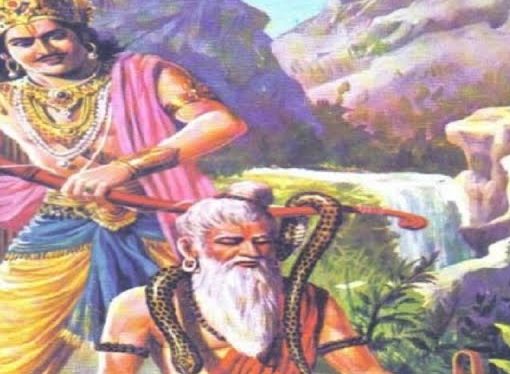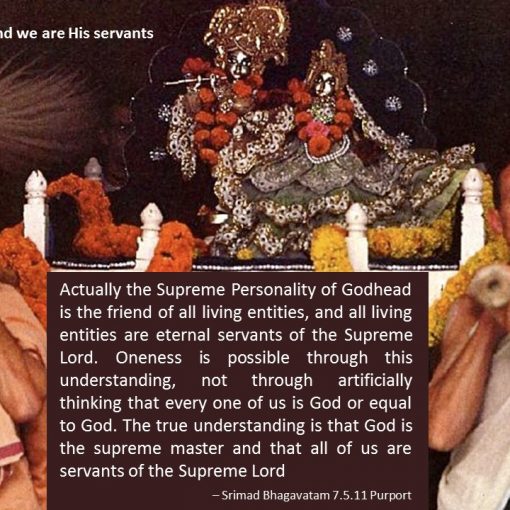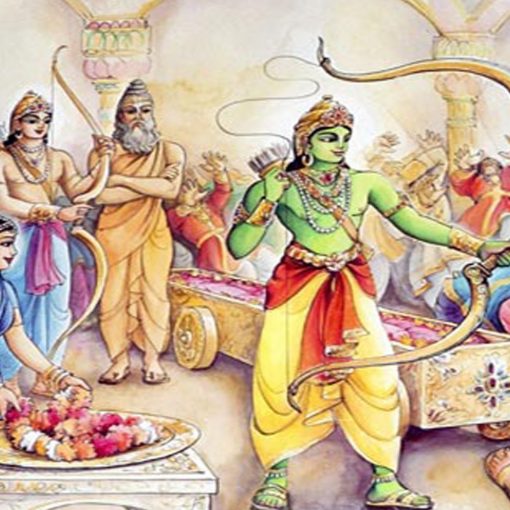The Incomplete Feeling of Vyāsadeva
The chapter opens with Śaunaka Rishi questioning Sūta Gosvāmī about Vyāsadeva’s motivation for composing the Bhāgavatam. Sūta explains that despite Vyāsadeva’s monumental contributions to Vedic literature, including the division of the Vedas, the compilation of the Mahābhārata, and the Vedānta-sūtras, Vyāsadeva felt a sense of dissatisfaction. This dissatisfaction puzzled him, as he had dedicated his life to providing spiritual guidance to humanity, making knowledge accessible to all, regardless of their qualification or social position.
Vyāsadeva reflects on the possible cause of his unease. He wonders if it could be due to his failure to directly emphasize devotional service to Lord Krishna in his previous works. He realizes that his efforts, while beneficial, were still inadequate in providing the ultimate spiritual satisfaction. This introspection marks the beginning of a turning point in his life, setting the stage for the revelation of the Bhāgavatam.
Nārada Muni’s Arrival at Vyāsadeva’s Ashrama
While Vyāsadeva was absorbed in such contemplation, Nārada Muni, the divine sage, arrived at his ashrama on the banks of the Sarasvatī River. Nārada Muni, known as the spiritual master of Vyāsadeva, sensed his disciple’s discontent. Nārada’s timely arrival signifies the mercy of the Supreme Lord, who arranges the guidance needed for His sincere devotees.
Vyāsadeva welcomed Nārada with great respect, offering him a proper seat and washing his feet. Vyāsadeva expressed his gratitude to Nārada, acknowledging him as a source of spiritual wisdom. Nārada, in turn, understood that Vyāsadeva’s dissatisfaction was rooted in the lack of a direct glorification of the Supreme Lord’s personal activities.
The Heartfelt Dialogue: Nārada’s Instructions
Nārada, observing Vyāsadeva’s discontent, questioned him about the cause of his dissatisfaction despite his great achievements. Nārada reminded Vyāsadeva that the essence of spiritual literature lies in its ability to inspire devotion to Krishna, not merely in its philosophical accuracy or ritualistic content. Nārada emphasized that only a text that focuses on the Lord’s transcendental pastimes and His loving exchanges with devotees can truly fulfill the soul.
Nārada advised Vyāsadeva to create a work that solely emphasizes Krishna’s personal form, qualities, pastimes, and loving interactions. He clarified that while Vyāsadeva’s other compositions had been valuable, they were lacking in their direct glorification of bhakti, the highest path of spiritual realization. Nārada urged him to compose a text that transcends dry philosophical speculation and ritualistic ceremonies, presenting the divine activities of Krishna in an accessible and engaging manner.
The Importance of Pure Devotion
Nārada explained that knowledge and renunciation alone are insufficient for achieving spiritual perfection. True liberation comes only through unalloyed devotional service, or bhakti, which allows one to develop a loving relationship with the Supreme Lord. Nārada further highlighted that even great souls are eager to hear about Krishna’s pastimes, as they offer transcendental pleasure and joy. He illustrated this with examples of exalted devotees, including the gopis of Vrindavana, who are considered the highest devotees due to their pure love for Krishna.
Nārada emphasized that literature centered on the Lord’s personal activities can cleanse the heart and awaken love for God. The glorification of Krishna’s pastimes attracts not only pure devotees but also those who are still entangled in material consciousness. By hearing such narrations, even the most fallen souls can be uplifted and transformed.
Nārada’s Life as a Testament to Devotion
To emphasize the power of bhakti, Nārada shared his own life story. He recounted how he was born as the son of a maidservant in a previous life. Despite his humble beginnings, he was blessed to serve exalted sages during the Chaturmasya period. The sages’ association inspired him to develop a deep attraction for the Holy Name and Krishna’s glories. By hearing the transcendental messages of the Lord, Nārada was able to transcend his birth and become a liberated soul.
This narrative serves as a testament to the transformative power of devotional service, demonstrating that anyone, regardless of birth or social standing, can attain the highest level of spiritual realization through sincere devotion. Nārada’s story encourages Vyāsadeva to compose a text that would similarly inspire others, guiding them towards the ultimate goal of life: love for Krishna.
Vyāsadeva’s Realization and Resolve
Moved by Nārada’s words, Vyāsadeva realized the importance of creating a scripture solely dedicated to glorifying the Supreme Personality of Godhead. He understood that the essence of all Vedic literature is to cultivate devotion, and only through the direct glorification of Krishna can the soul find true satisfaction. Vyāsadeva resolved to compile the Śrīmad-Bhāgavatam, a work that would be a pure expression of Krishna’s pastimes and the ultimate conclusion of all Vedic teachings.
The Bhāgavatam would not only detail the Lord’s activities but also present the stories of His devotees, highlighting their devotion and unwavering faith. Vyāsadeva intended this scripture to be accessible to all—paramahamsas (pure-hearted devotees), householders, and seekers of truth. By focusing exclusively on Krishna’s personal form, qualities, and pastimes, Vyāsadeva aimed to provide readers with the highest form of spiritual literature, offering them a direct path to pure devotion.
The Composition of the Śrīmad-Bhāgavatam
Empowered by Nārada’s guidance, Vyāsadeva began composing the Bhāgavatam. He meticulously structured it to be the ripened fruit of all Vedic knowledge, filled with the nectar of Krishna’s pastimes and His loving exchanges with devotees. The Bhāgavatam was designed to cater to the spiritual needs of all classes of people, irrespective of their prior knowledge or spiritual advancement. It presents the essence of the Vedas in a manner that is engaging and spiritually uplifting, making it the perfect scripture for the present age of Kali, marked by darkness and confusion.
The Uniqueness of the Bhāgavatam
The Śrīmad-Bhāgavatam stands out from other Vedic scriptures due to its exclusive focus on Krishna and His devotees. While other texts offer a blend of ritualistic injunctions, moral teachings, and philosophical discourse, the Bhāgavatam is purely devotional. It emphasizes that the highest goal of life is to develop a loving relationship with Krishna, achieved through hearing, chanting, and remembering His holy names and pastimes.
The Bhāgavatam is intended for paramahamsas, those who have transcended material desires and are solely focused on serving the Supreme Lord. However, it is also accessible to sincere seekers who wish to cultivate a deeper understanding of Krishna’s divine nature. Its narrative style, filled with engaging stories, dramatic events, and heartfelt dialogues, makes it a compelling read for anyone, regardless of their background or spiritual maturity.
The Message for Humanity
The central message of the Śrīmad-Bhāgavatam is that the ultimate purpose of life is to cultivate love for Krishna, the Supreme Personality of Godhead. It teaches that the essence of all spiritual practices—whether it be karma (action), jñāna (knowledge), or yoga (meditation)—is to develop unalloyed devotion to the Lord. The Bhāgavatam guides readers on how to live a life centered on Krishna, emphasizing the importance of surrender, humility, and unwavering faith.
It also addresses the challenges faced by individuals in the age of Kali, such as increased materialism, short lifespan, and diminished spiritual strength. The Bhāgavatam offers practical solutions for these problems, encouraging individuals to engage in the process of hearing and chanting the Lord’s glories as the most effective means of attaining spiritual progress in this age.
The Role of Devotees and Preachers
The chapter underscores the importance of devotees and preachers in disseminating the message of the Bhāgavatam. Just as Nārada Muni inspired Vyāsadeva to compile the Bhāgavatam, devotees are encouraged to share its teachings with others. The Bhāgavatam is not meant to be kept secret; it is a treasure to be shared with the world, offering the highest benefit to all living beings.
Nārada’s instruction to Vyāsadeva serves as a broader principle for all spiritual teachers: the importance of focusing on the personal form of God and His loving interactions with devotees. It is through such devotional narration that the hearts of the audience can be truly transformed, leading them to the path of eternal bliss.
Conclusion
This chapter of the Śrīmad-Bhāgavatam establishes the primacy of bhakti as the essence of all Vedic knowledge. Through the encounter between Vyāsadeva and Nārada Muni, we learn that the ultimate purpose of life is to develop a loving relationship with Krishna. The chapter emphasizes that true spiritual fulfillment is only possible through devotional service, which is the essence of the Bhāgavatam.
Vyāsadeva’s decision to compose the Bhāgavatam marks a pivotal moment in Vedic history, as it provides humanity with a scripture that transcends ritualistic practices and philosophical speculation, focusing entirely on Krishna’s divine pastimes. It stands as a beacon of hope and guidance for all sincere seekers, offering them a direct path to the highest spiritual realization—unalloyed love for God.





